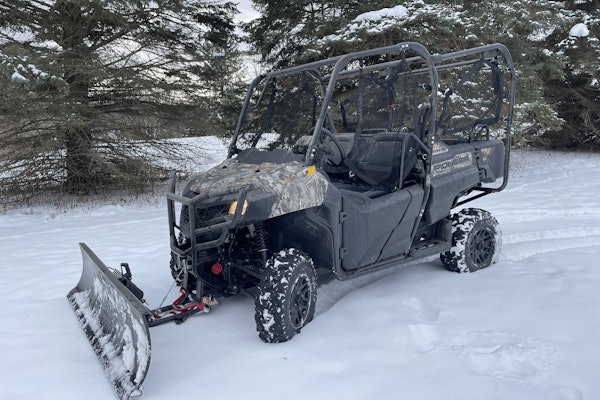When Rea Construction won a contract to widen Interstate 77 near Charlotte, North Carolina, safety manager Steve Hubbard knew getting the company’s haul trucks in and out of the paving area, which was in the median, would be a problem.
The trucks would have to slow down on the interstate to enter openings in the barrier wall and merge back into traffic when leaving the jobsite – a difficult task for large trucks that don’t accelerate quickly.
“The trucks have to slow down in rush-hour traffic,” Hubbard says. “And when a truck slows down, everyone has to slow down.”
This situation often leads to rear-end collisions. And because most interstate widening projects now require adding lanes in the center, the scenario of work trucks entering and exiting barrier wall openings is common across the country, Hubbard says.
Rea Construction’s solution to the predicament – a truck-only ramp leading to an overpass – won safety innovation awards from both the National Asphalt Pavement Association and the American Road & Transportation Builders Association.
With the approval of the North Carolina Department of Transportation, the company built and paved a 28-foot-wide dirt ramp in the interstate median reaching up to a bridge interchange. Workers removed the bridge’s outside rail and repainted the lane lines on the bridge to make the traffic path narrower. This made room for a “truck only” lane, allowing dump trucks to drive to and from the nearby asphalt plant without entering interstate traffic. The trucks were able to accelerate and decelerate on the ramp.
“It was a pretty simple idea and simple construction,” Hubbard says of the ramp, which was built about nine months ago.
The ramp made the project move faster because the haul trucks, which needed to make 250 trips a day between the plant and the median, were able to enter and exit the jobsite quickly. And the ramp put an end to truck-related accidents that can prevent materials from reaching the site.
Rea Construction has demolished the ramp and returned the bridge’s outside rail because the widening project has moved beyond the bridge, but Hubbard says the company will use the truck-only jobsite entrance where possible in the future. The only drawback to the practice is that it can only be used when a bridge crossing the interstate is near the work area.
“The truck-only ramp is a safety item and it’s a productivity item that makes the job go faster,” Hubbard says.









